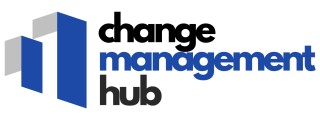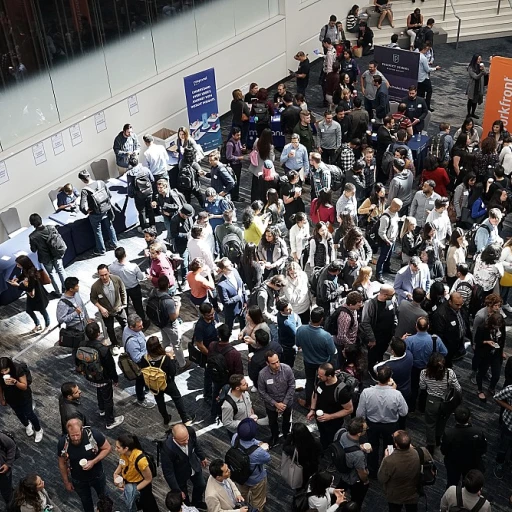
Understanding the Kaizen Philosophy
Diving into Kaizen: Embracing Continuous Improvement
Understanding the core of the kaizen philosophy is key to unraveling its potential in a business environment. This Japanese term, which translates to "change for better," underpins a commitment to continuous improvement. Recognizing its value can radically transform not only processes but also the mindset within an organization.
Central to kaizen is the idea of small, incremental improvements. By focusing on ongoing improvements, companies can enhance efficiency, reduce waste, and ultimately boost customer satisfaction. The philosophy suggests that every aspect of a business can be improved, creating a culture of continuous improvement that propels the organization forward.
Implementing kaizen requires more than merely applying the kaizen principles. It comes down to embedding these principles within the organization’s fabric, from employees at all levels to top management, making it a fundamental part of the company’s culture.
Kaizen methodology prioritizes problem solving through methods like root analysis and plan-check cycles. This approach helps in identifying areas for improvement and addressing the root causes of inefficiencies within production processes. Companies that excel in operational excellence usually adopt a kaizen process that constantly seeks ways to refine and enhance overall quality.
A noteworthy factor in the kaizen method is the visual management system that facilitates clearer communication and aids teams in quickly identifying processes that require attention. This is instrumental in eliminating waste and significantly improving an organization’s production system.
Curious about how this philosophy translates into actual business scenarios? Stay tuned as we explore real-world kaizen examples, the pivotal role of leadership, and how empowering employees drives meaningful change in subsequent sections.
To delve further into how these philosophies can drive positive change, explore embracing transformation for positive outcomes.
Kaizen in Action: Real-World Examples
Real-Life Insights: Concrete Kaizen Applications
Implementing the Kaizen philosophy in real business environments can yield noteworthy advances in both efficiency and quality. Companies thrive when they adapt the principle of continuous improvement in daily operations. This section dives into some impactful examples of how diverse industries have leveraged Kaizen events for their benefit.
At the heart of Kaizen is the focus on eliminating waste, optimizing the production process, and enhancing overall customer satisfaction. Many companies have witnessed remarkable results by engaging in structured problem solving exercises. By utilizing root analysis methods alongside Kaizen principles, they achieve not only improved workflows but also significant reductions in inventory and time spent on each unit of production.
This philosophy encourages businesses to regularly conduct Kaizen events, involving team members across all employee levels. When employees actively participate in these improvement sessions, it cultivates a culture of continuous excellence. For instance, visual management techniques are employed to monitor processes and quickly identify areas needing improvement, saving both time and resources.
Furthermore, the automotive industry, with its reliance on complex production systems, embraces the Kaizen process to maintain flexibility and adaptability. A famous example includes Kaizen implementation that led to streamlined assembly lines, resulting in faster turnaround times without compromising on quality.
By integrating Kaizen into business management, firms have not only reached new heights of operational excellence but also built a stable platform for ongoing improvements. A comprehensive understanding of these Kaizen applications can guide your organization through challenging transformations, making it resilient and future-ready. For more insights on navigating economic shifts with Kaizen, consider exploring this reliable source.
The Role of Leadership in Kaizen
Leadership as the Backbone of Kaizen
The Kaizen philosophy thrives on the robust backbone provided by leadership, which often sets the stage for its success. Leaders must embody and disseminate Kaizen principles within their organizations actively. Implementing kaizen involves embracing a culture of continuous improvement, emphasizing the significance of eliminating waste, and focusing on enhanced customer satisfaction through better quality and efficiency. In successful kaizen initiatives, leaders serve as role models, driving the change management process with enthusiasm and commitment. They need to constantly engage with team members across all employees levels, encouraging problem solving and participation in kaizen events. Leadership is crucial in fostering operational excellence and a culture of continuous process improvement, ensuring that every team member aligns with the overall business goals. Leaders must also be adept at employing visual management and root analysis, crucial tools in the kaizen method. They involve observing the production process and inventory closely, identifying areas of improvement, and executing plan check actions effectively. By setting example and providing clear guidance, leaders can guide their teams through hurdles faced during a kaizen event, averting potential setbacks and overcoming challenges. Initiating a kaizen process demands an unwavering commitment from leadership to promote problem-solving across the structure. This leadership, in turn, supports and motivates employees to take ownership of their roles, ultimately nurturing a resilient culture of continuous improvement. For further insights on navigating the complexities of compliance risk management within change management, you can explore more on the related impact of leadership strategies.Employee Involvement in Kaizen
Empowering Employees for Transformative Success
Engaging employees across all levels is critical to realizing the true potential of kaizen in any organization. Embedding the kaizen philosophy into the company culture allows employees to take initiative and participate actively in continuous improvement processes. When employees are empowered to identify inefficiencies and propose solutions, they contribute significantly to operational excellence. By leveraging their insights, businesses can improve quality, reduce production system waste, and enhance customer satisfaction.- Creating a Culture of Trust: A successful kaizen approach depends on a workplace environment where employees feel safe to communicate ideas without fear of backlash. This culture of trust is pivotal for improving processes efficiently.
- Promote Continuous Learning: Incorporating opportunities for learning and development in problem-solving methods boosts employee engagement. Employees should be encouraged to partake in kaizen events that develop their skills and expertise.
- Facilitate Open Communication: Open channels of communication highlight potential areas for improvement. Through collaboration, employees can identify root causes of issues and effectively execute remedial actions.
- Utilizing Visual Management: Implementing visual management tools helps all team members stay on track with ongoing projects and ensures transparency in the kaizen process. It plays a crucial role in sustaining continuous improvement.
Overcoming Challenges in Kaizen Implementation
Facing and Overcoming Challenges
Implementing Kaizen in an organization comes with its own set of challenges. While the philosophy of continuous improvement has its benefits, there can be hurdles that management and employees need to address to fully integrate it into the business culture.- Resistance to Change: A common issue when introducing any new process is resistance from employees. People can be wary of change, especially if they have been accustomed to a particular way of doing things. Educating team members about how Kaizen can lead to improvements in quality and efficiency can help reduce this resistance.
- Lack of Management Support: For Kaizen to be successful, leadership play a crucial role. Managers must actively participate and show commitment to the plan check processes. Strong leadership ensures that principles like eliminating waste and problem solving are prioritized.
- Insufficient Resources: Continuous improvement requires investment in terms of time and sometimes resources. Proper allocation is necessary to conduct successful kaizen events aimed at refining production processes and enhancing customer satisfaction.
- Poor Communication: Transparent communication is key in fostering an environment conducive to the Kaizen philosophy. Frequent updates and clear explanations of the processes keep employees informed and aligned, thus reducing misunderstandings in a kaizen event.
- Measuring Success: Identifying the right metrics for measuring success in Kaizen initiatives can be tricky. Set clear, achievable goals and consistently monitor progress through visual management tools to identify areas for further improvement.
Measuring Success in Kaizen Initiatives
Tracking Improvements Through Key Metrics
In the world of kaizen, measuring success isn't just about collecting a few data points. It's a comprehensive approach that helps capture the essence of continuous improvement and its impact on overall business efficiency. To accurately gauge the success of kaizen initiatives, several key metrics come into play.
- Efficiency and Productivity: One of the primary objectives of any kaizen process is to enhance efficiency. Metrics here may include cycle times, production rates, and labor efficiency. By monitoring these, teams can validate whether their kaizen events have truly enhanced productivity.
- Quality Improvements: Another crucial indicator of successful kaizen implementation is quality enhancement. This can be assessed via reductions in defect rates, improved first-pass yields, or fewer customer complaints—all tangible proof of quality improvements.
- Waste Reduction: Kaizen heavily focuses on waste elimination, whether it's in terms of time, resources, or processes. Metrics here track reductions in inventory sizes, unnecessary process steps, and idle resources.
- Employee Engagement: As previously mentioned, employee involvement is a cornerstone of kaizen philosophy. Employee feedback, participation rates in kaizen events, and the contribution of ideas are generally monitored to ensure a thriving culture of continuous improvement.
Implementing Visual Management
Visual management is an integral part of the kaizen method in monitoring success. By using tools like dashboards and visual boards, teams can stay updated about ongoing improvements, track KPIs, and promptly spot areas needing attention. This approach solidifies the kaizen principles at every level of the organization.
Regular Plan-Do-Check-Act Cycle
An effective way to measure success in kaizen initiatives is by consistently applying the Plan-Do-Check-Act (PDCA) cycle. It helps teams not only implement improvements but also periodically reassess and refine them, thereby ensuring sustainable operational excellence.
Through these methodologies and tools, businesses leveraging kaizen can efficiently assess and illustrate the value of their improvement efforts, ultimately driving customer satisfaction and enhancing production systems.













